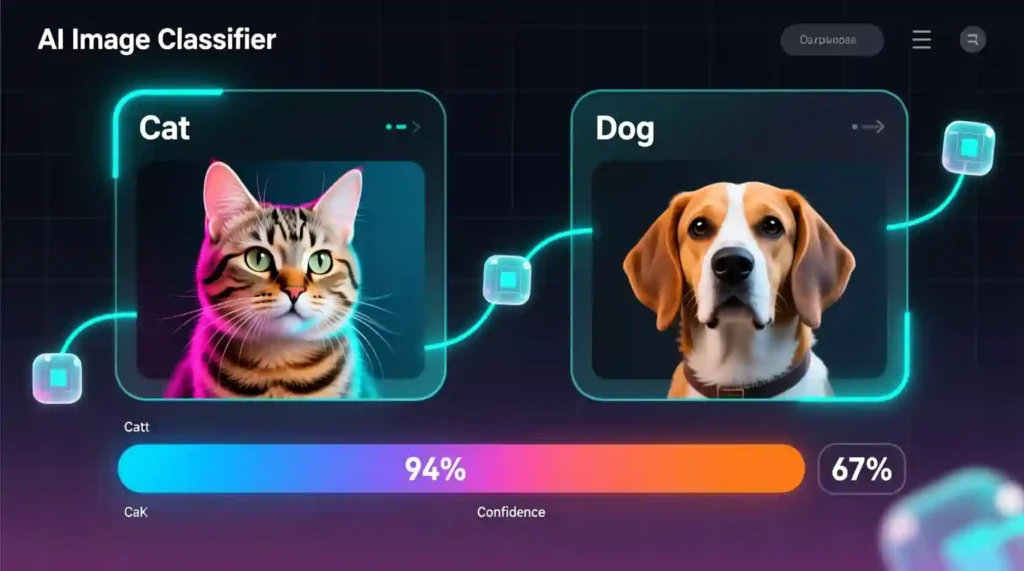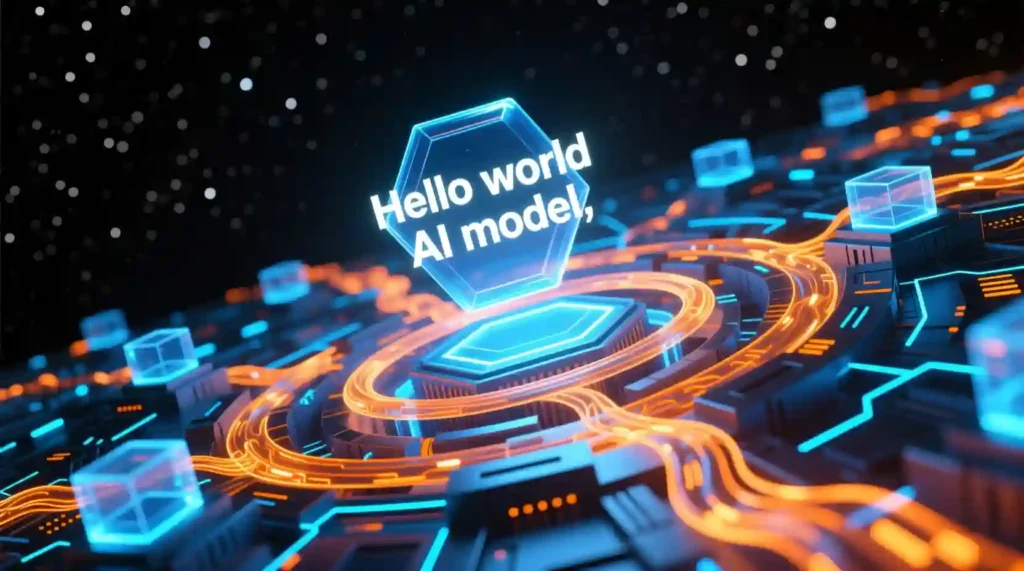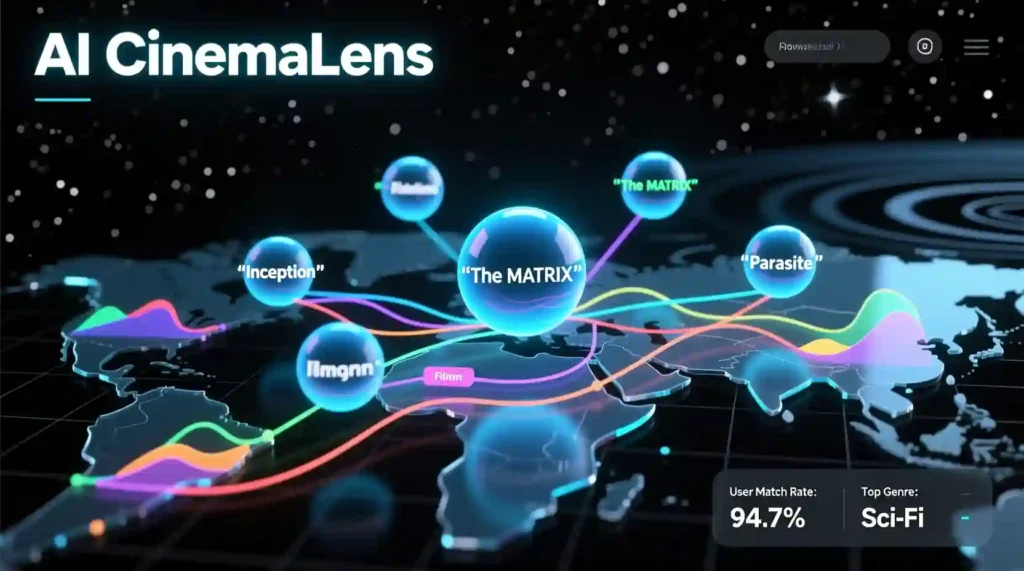
Fast.ai Deep Learning for Coders – Learn Deep Learning Like a Real Builder, Not a Theorist
Why Fast.ai Hits Different
Let’s be honest — most deep learning courses make you feel like you’re drowning in equations before you’ve even written a single line of code. Fast.ai flips that on its head.
The Fast.ai Deep Learning for Coders course is pure rebellion against the “you need a PhD to do AI” myth. Jeremy Howard, Kaggle Grandmaster and co-founder of fast.ai, built this for coders who want to create, not just memorize. You start coding models that actually work in the first lesson. No fluff. No impossible math walls. Just real, working deep learning that feels like magic — and then shows you exactly how the magic works.
This is the course that teaches you to think like a practitioner, not a spectator.
The Practical Path: Build, Deploy, Understand
This is where you go from zero to deployment in days, not months.
of Fast.ai Deep Learning for Coders focuses on immediate results — building powerful models with minimal data, and understanding enough theory to make them work in the real world.
Step 1 – Your First Model, Fast

You don’t start with boring theory. You start with an image classifier. Right out of the gate, you build something that can tell cats from dogs, or sneakers from sandals. You’ll use the fastai library and PyTorch, both industry-standard frameworks.
You’ll also learn how to use free GPU resources from Kaggle or Paperspace, so no expensive setup. By the end of the first lesson, you’ve trained your first world-class computer vision model.
Step 2 – Turn It Into Something People Can Use
The second lesson is where you make your model public.
You’ll deploy it using Gradio or Hugging Face Spaces, creating an app that anyone can interact with. It’s a mind-blowing feeling — seeing your code come alive as a working AI app on the web.
This is the point where deep learning stops feeling like a theory and starts feeling like power.
Step 3 – Understanding Neural Net Foundations
Now you go under the hood.
You’ll play with PyTorch tensors, explore transfer learning, and fine-tune existing models. The beauty here is how simple it feels — no dense theory dump, just direct cause and effect. Change one thing, observe what happens, learn fast.
You start thinking like a scientist who experiments instead of a student who memorizes.
Step 4 – Dive Into NLP and Transformers

This is where the course gets poetic. You’ll teach machines to understand text — emotion, context, tone. You’ll build a sentiment analysis model, exploring how Transformers (the tech behind ChatGPT) process language.
You’ll start seeing patterns in data the way writers see rhythm in words.
Step 5 – Build From Scratch (No Frameworks, No Safety Nets)
This is the “from-scratch” moment. You write your own Stochastic Gradient Descent (SGD) loop. You see what a model really is — just numbers adjusting themselves until they make sense.
It’s like taking apart an engine to understand how every piece breathes together.
Step 6 – Don’t Sleep on Classic Machine Learning
Deep learning is powerful, but sometimes a Random Forest or Gradient Boosting model beats it. This course reminds you that simplicity can still win. You’ll learn to analyze tabular data, combining modern deep learning with tried-and-true machine learning wisdom.
Step 7 – Collaborative Filtering and Recommendations

This is where you build your own movie recommendation system — like Netflix, but your version. You’ll use embeddings and matrix factorization, and suddenly, you’re no longer just using models; you’re crafting intelligence.
Step 8 – Convolutions: The Eyes of AI
You finally understand how machines see.
You’ll explore Convolutional Neural Networks (CNNs), data augmentation, and architectural tweaks that make or break performance. This part teaches you how to build models that feel alive when they look at images.
Step 9 – Ethics: The Soul of AI
Before wrapping Part 1, you pause for something deeper — ethics. You’ll explore bias, fairness, and responsible AI deployment. Jeremy Howard doesn’t let you forget that AI touches lives, not just data points.
It’s a humbling, grounding finish to an exhilarating first phase.
The Deep Foundations: Math, Magic, and Mastery
You’ll go deeper — into math, architectures, and the hidden machinery that makes modern AI so mind-blowingly powerful.
This is the moment when everything falls into place.
Step 10 – The Geometry of Intelligence
Lessons 9–11 take you through matrix multiplication, optimization, and how tools like Stable Diffusion create new images from text. You’ll finally understand what’s happening behind generative models without getting buried in calculus.
You’ll learn how diffusion models think, blur, and unblur — the secret dance that generates art from noise.
Step 11 – Backpropagation and the Chain Rule
Now comes the engine.
You’ll discover backpropagation, multi-layer perceptrons, and the chain rule that makes neural networks learn. You don’t just memorize formulas — you trace the flow of gradients like lifeblood through a model.
This is where AI stops being a “black box” and becomes transparent.
Step 12 – The Learner Framework and Autoencoders
Jeremy’s fastai library is built on elegance — and here, you see why. You’ll rebuild the Learner framework, understand normalization, and design your own autoencoder.
Suddenly, the entire fastai codebase feels like home. You see the structure, the reasoning, the soul.
Step 13 – Speed and Power: ResNets, Diffusion, and Dropout
Now you shift into performance mode.
You’ll work with ResNets, DDPM (Denoising Diffusion Models), and mixed precision training. You learn how to push models faster, make them smarter, and run them on consumer GPUs.
This is the kind of knowledge that makes your work feel elite.
Step 14 – Mastering Modern AI: Attention and Diffusion
The final lessons tie everything together — attention mechanisms, Karras et al. (2022) research, DDIM, super-resolution, and latent diffusion.
This is where you step into the frontier — not just learning from AI models, but thinking like the people who build them.
Who This Course Is For

This course isn’t for people who want to watch passively. It’s for builders, hackers, dreamers — anyone who wants to create intelligence that lives in the real world.
All you need is a year of coding experience (preferably Python) and basic math. You don’t need expensive GPUs or massive datasets — sometimes, fewer than 50 images are enough.
And the best part? Everything — yes, everything — is free. The full book Deep Learning for Coders with fastai and PyTorch is available online. Plus, there’s a warm, thriving forums.fast.ai community ready to help you when you hit walls.
Conclusion – Why Fast.ai Changes Everything
Learning deep learning with Fast.ai isn’t about chasing AI trends. It’s about understanding how intelligence grows from data, how humans teach machines, and how we can do it responsibly.
The Fast.ai Deep Learning for Coders course doesn’t just make you a better coder — it reshapes how you think about learning itself. You go from following tutorials to creating them. From wondering how AI works to showing others.
This course builds more than models — it builds confidence, clarity, and creative control.
You won’t just learn deep learning.
You’ll feel it — in your fingers, your flow, your failures, and your wins.
That’s the kind of learning that sticks.
💥 Call to Action – Stop Watching AI Happen. Start Building It.
You’ve read the theory. You’ve seen the hype. Now it’s your turn to create something real.
👉 Start the Fast.ai Deep Learning for Coders course today.
It’s 100% free, insanely practical, and built for people who actually want to do deep learning — not just talk about it.
No PhD. No fancy gear. No excuses.
Just you, your laptop, and the power to build models that make people say, “Wait… you made that?”
🌐 Jump in now at course.fast.ai and start your journey.
Every coder who’s serious about AI starts here. The next one could be you.
🤖 FAQ: Fast.ai Deep Learning for Coders
Q1: What is Fast.ai Deep Learning for Coders?
It’s a free hands-on deep learning course created by Jeremy Howard, teaching you to build and deploy real AI models using the fastai library and PyTorch — even if you don’t have a PhD.
Q2: How long does the Fast.ai Deep Learning for Coders course take?
Most people finish Part 1 in about 8–10 weeks and Part 2 in 12–14 weeks if you dedicate a few hours each week. You can learn at your own pace — no deadlines, no pressure.
Q3: Do I need advanced math for Fast.ai?
No. You just need basic high school math and a bit of Python experience. The course is designed for coders, not mathematicians.
Q4: Can I do the Fast.ai course without a GPU?
Yes. The course shows you how to use free GPU resources from Kaggle or Paperspace. You don’t need to buy expensive hardware to start.
Q5: Is Fast.ai better than Coursera or DeepLearning.AI?
Fast.ai focuses on doing — you start coding models immediately.
Coursera and DeepLearning.AI focus more on theory and lectures. Fast.ai gives you working experience faster, making it ideal for builders and creators.
Q6: Is there a certification for FastAI Deep Learning for Coders?
Fast.ai doesn’t give traditional certificates, but your projects and portfolio will speak louder than any piece of paper. Employers love proof of real work — and that’s what you’ll have.
Q7: What can I build after completing the Fast.ai course?
You’ll be able to build image classifiers, text sentiment models, recommendation systems, diffusion art generators, and even deploy AI web apps — all from scratch.
Q8: Is Fast.ai good for beginners?
Absolutely. As long as you’ve coded before (in Python ideally), you’ll be fine. It’s the most beginner-friendly deep learning course that still teaches advanced topics.
Q9: Does Fast.ai cover generative AI or Stable Diffusion?
Yes. Part 2 of the course dives deep into diffusion models, attention mechanisms, and transformers, giving you the skills to understand and build generative AI systems.
Q10: Where can I start Fast.ai Deep Learning for Coders?
You can start right now for free at course.fast.ai — no sign-up walls, no hidden costs. Just pure, practical AI learning.
Final Push:
If you’re waiting for the perfect time to start your AI journey, it’s now.
Open your laptop, head to course.fast.ai, and write your first line of deep learning code today.
Because AI isn’t the future anymore. You are.

Pingback: Top Hugging Face NLP & LLM Course 2025 – Master AI Fine-Tuning - zadaaitools.com